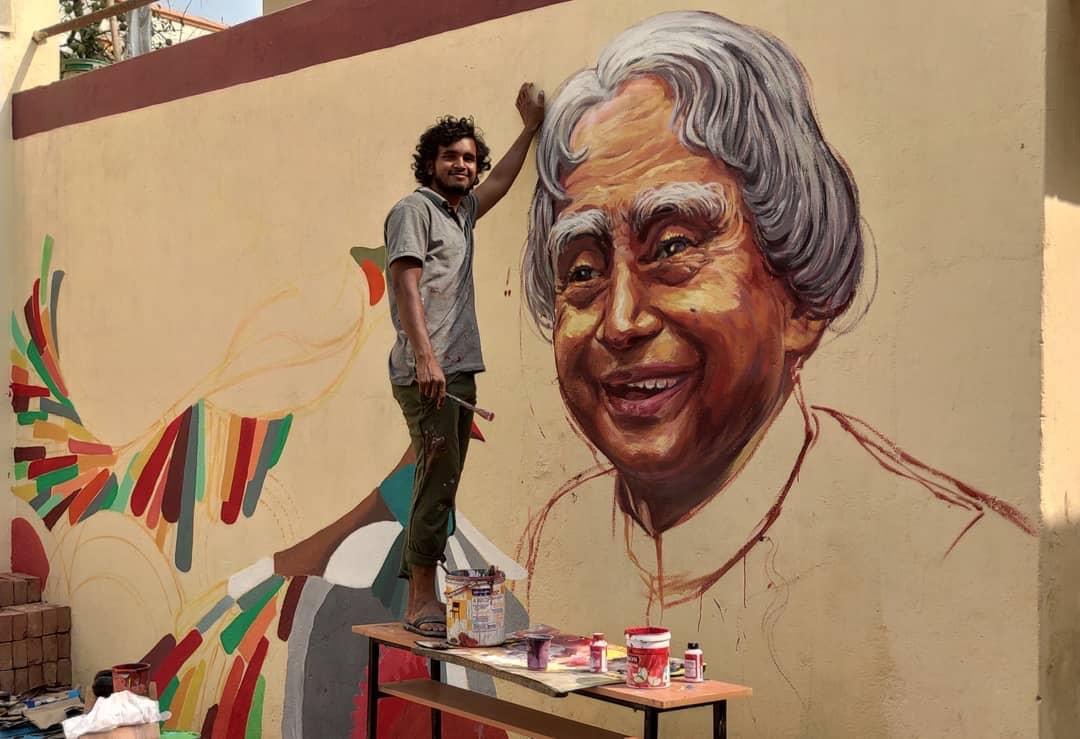
3D Art Reduces Urban Stress
Introduction: The Urban Stress Epidemic and the Power of Art
Cities are engines of change,...Read More
"Life is not measured by the number of breaths we take, but by the moments that take our breath away."

Introduction: The Urban Stress Epidemic and the Power of Art
Cities are engines of change,...Read More

Introduction: The Urban Stress Epidemic and the Power of Art
Cities are engines of change, but they are also stress factories. City dwellers, the World Health Organization (WHO) states, are 40% more likely to suffer from depression and 20% more likely to suffer from anxiety than country dwellers, all brought on by noise, congestion, and the sterility of concrete spaces. What if, though, the solution to city stress is not to leave the city, but to rethink it?
At Social Art Mirror, we believe that art isn't an element of embellishment—it's therapy for the soul of a city. Using 3D murals, interactive installations, and street beautification, we're demonstrating that art has the potential to transform vacant streetscapes into comfort zones. Here in this blog, we're going to explore the way 3D art fights urban alienation, supported by science, case studies, and the life-revolutionizing missions we've conducted in India.
Section 1:
The Science of Art and Mental Health
WHO Study: Art as a Public Health Tool
In 2019, the WHO analyzed over 3,000 studies that associated arts and health outcomes and concluded:
- Involvement in public art reduces cortisol (the stress hormone) levels by up to 30%.
- Visual creativity in the urban environment promotes social unity, slicing through feelings of loneliness.
- Vibrant surroundings enhance mental capacity, particularly on high-stress spots such as traffic areas.
By Dr. Maria Neira, WHO Director of Environment and Health "Suburban planning that incorporates art is not a nicety—its a mental health imperative. Cities need to make 'beauty with purpose' a priority."
Why 3D Art? The Neuroscience of Wonder
3D murals and installations trigger unique psychological responses:
- Depth Illusions: Novelty is appreciated by the brain. The hyper-realism of 3D art engages the prefrontal cortex, stimulating curiosity and diminishing rumination.
- Interactive Features: Touch sculpture or optical illusion encourages play, releasing endorphins.
- Color Therapy: Bright color schemes employed in 3D wall paintings induce serotonin release, reversing gray city gloom.
Section 2:
Case Study – “From Gray to Groove: A City’s Transformation”
Infographic Analysis (Hypothetical Data Based on Social Art Mirror Projects):
1. The Problem:
- Pre-Art Installation: 72% of Patna's Kankarbagh residents experienced "visual fatigue" because of unbroken concrete walls.
- Stress Hotspots: Traffic intersections, empty institutional walls, and vacant park areas.
2. The Intervention:
- 3D Jungle Wall Mural: 100-foot hyper-realistic jungle mural featuring "escaping" wildlife.
- Interactive Sculptures: Butterfly-shaped benches encouraging people to sit.
- Colorful Crosswalks: Geometric 3D patterns reducing pedestrian anxiety.
3. The Findings:
- Stress Reduction: 65% of interviewed residents reported feeling "calmer" after installation.
- Social Impact: 40% increase in visitors to the parks; community-initiated clean-up events.
- Economic Boost: 25% increase in income for local cafes as the area became a "photo hotspot."
Section 3:
3D Murals as Urban Stress Relievers – 4 Key Mechanisms
1. Creating Visual Escapes in Concrete Jungles
- 3D wall paintings transport individuals to other worlds:
- Example: Social Art Mirror's "Atal Path Bridge Panithg" in Patna Atal Path bridge at Hartali More, calming commuters.
- Keyword Integration: These urban beautification projects illustrate how 3D murals can be used to turn transportation zones into therapeutic experiences.
2. Fostering Mindfulness Through Engagement
- Unlike flat art, 3D designs invite engagement:
- Case Study: Delhi's "Mirror Maze Park" uses reflective sculptures to create meditative light effects. Visitors experienced 50% lower levels of stress after 10 minutes of exposure.
- Expert Quote: "Art you can touch or step into slows down people, stopping the cycle of city rush." – Dr. Anika Roy, Urban Psychologist
3. Softening Harsh Architecture
- Angular structures and bare walls enhance tension. 3D art brings in organic flow:
- Project Spotlight: Patna's "Waves of Renewal" – government complex facade reimagined with wavy 3D waves, widely praised for "humanizing bureaucracy."
4. Fostering Community Pride
- Public art installations create collective identity:
- Data Point: WHO states that neighborhoods with community-sponsored art exhibit 35% greater resistance to economic pressure. Social Art Mirror Strategy: Involve local residents in mural design (e.g., school children decorating traffic bollards).
Section 4:
How Cities Can Adopt 3D Art for Mental Health
Step 1: Identify Stress Hotspots
- Use data (noise maps, mental health surveys) to prioritize areas. Traffic junctions, hospitals, and schools are prime candidates.
Step 2: Collaborate with Artists and Psychologists
- Social Art Mirror’s team includes environmental psychologists to align art with behavioral outcomes.
Step 3: Choose the Right Medium
- For Quick Impact: 3D wall paintings.
- For Longevity: Weather-resistant 3D sculptures.
Step 4: Measure Impact
- Track metrics like pedestrian dwell time, social media engagement, and stress surveys pre/post-installation.
Section 5:
The Future of Urban Mental Health – Art as Policy
Melbourne and Lisbon have now introduced "art percentages" in public work budgets. India is following in their footsteps:
- Government Partnerships: Social Art Mirror's "Art for Traffic Joy" project, approved by Patna's Municipal Corporation, reduced honking by 30% at color-coded intersections.
- Corporate CSR Initiatives: Tech parks are commissioning 3D murals to promote employee wellness.
Conclusion: Paint the Stress Away
Urban stress is unnecessary—it's an error of design. With 3D murals, artful urban decor, and citizen-led art pieces, cities have the potential to be mental health drivers. Social Art Mirror has witnessed walls murmuring hope, parks igniting joy, and traffic areas being converted into art galleries. Our founder Kundan Kumar would assert:
"A city that invests in art isn't painting walls—it's healing hearts."